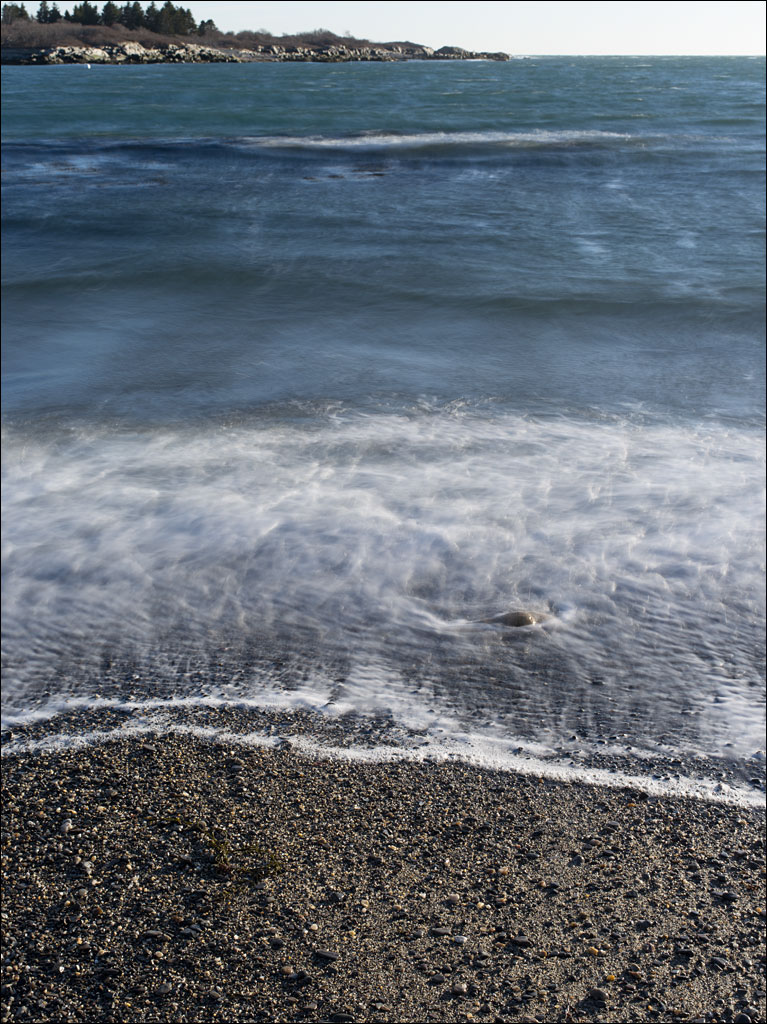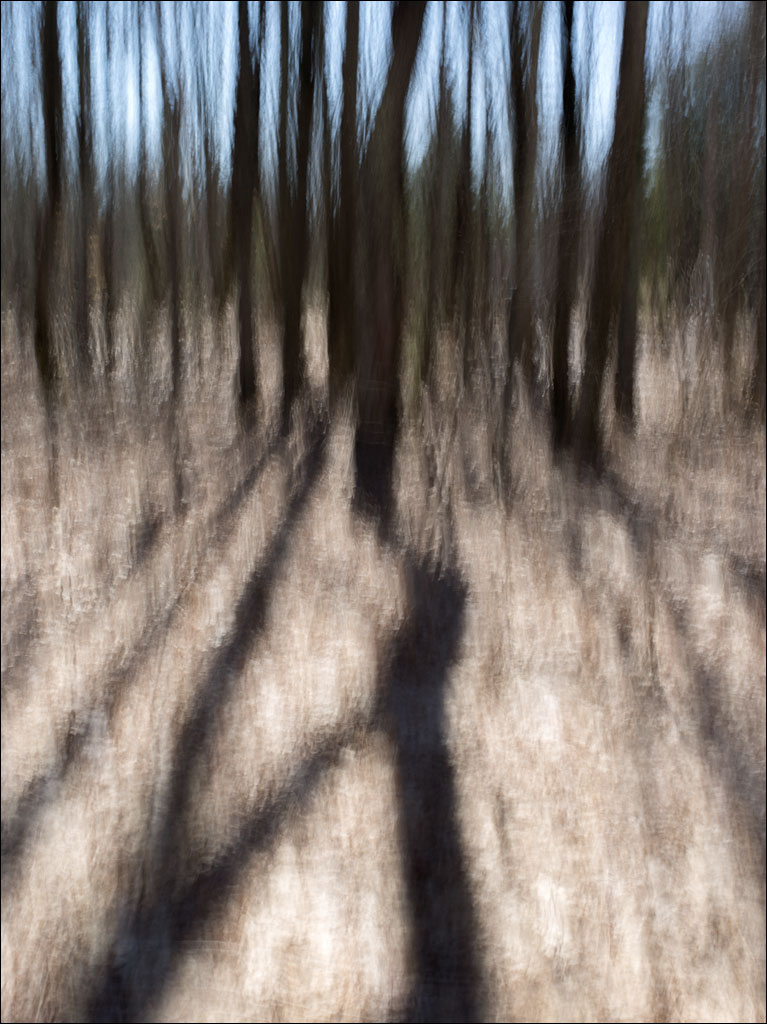 Click on the image for a larger view.
Click on the image for a larger view.
Tag Archives: Nature
Inside a Storm
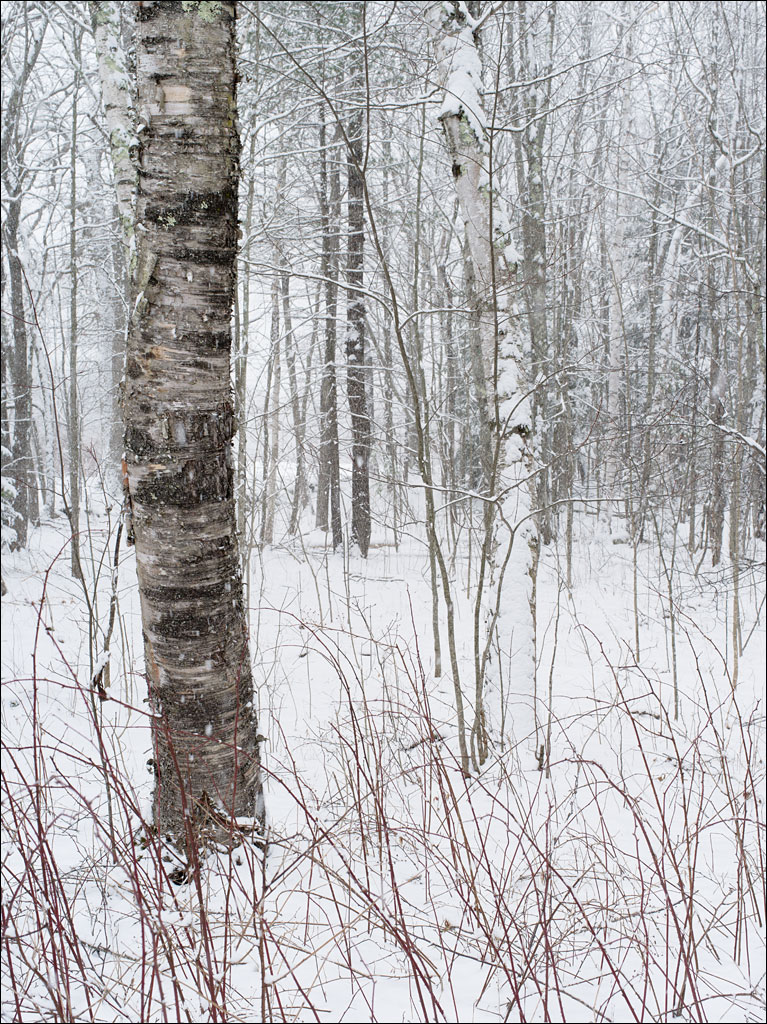 We woke Monday in a snow storm. This was certainly not the biggest storm we have experienced; it was just a few inches of powder. But being in a storm is remarkably peaceful. The snow seems to dampen sound where you feel the space around you is a little smaller, a little more personal. The same happens with visibility. Unlike rain, the snow does not soak you—you can just brush it off your clothes. While we are both ready for spring, especially after that last two unusually long winters, it was a nice interlude. Much of the snow melted in the 40°F weather on Tuesday. Click on the image for a large view.
We woke Monday in a snow storm. This was certainly not the biggest storm we have experienced; it was just a few inches of powder. But being in a storm is remarkably peaceful. The snow seems to dampen sound where you feel the space around you is a little smaller, a little more personal. The same happens with visibility. Unlike rain, the snow does not soak you—you can just brush it off your clothes. While we are both ready for spring, especially after that last two unusually long winters, it was a nice interlude. Much of the snow melted in the 40°F weather on Tuesday. Click on the image for a large view.
Adorable Snow Monster
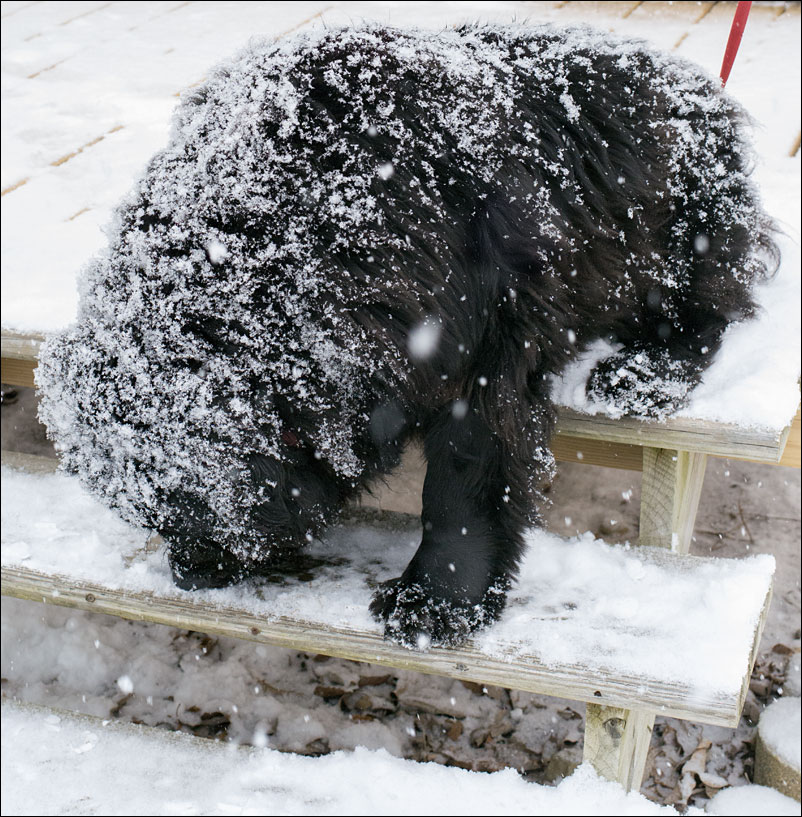 We woke to a snow storm this morning. When an ill wind blows cold and long, strange things can be seen. It is wise never to venture too far from far from home. Continue reading
We woke to a snow storm this morning. When an ill wind blows cold and long, strange things can be seen. It is wise never to venture too far from far from home. Continue reading
Visitor
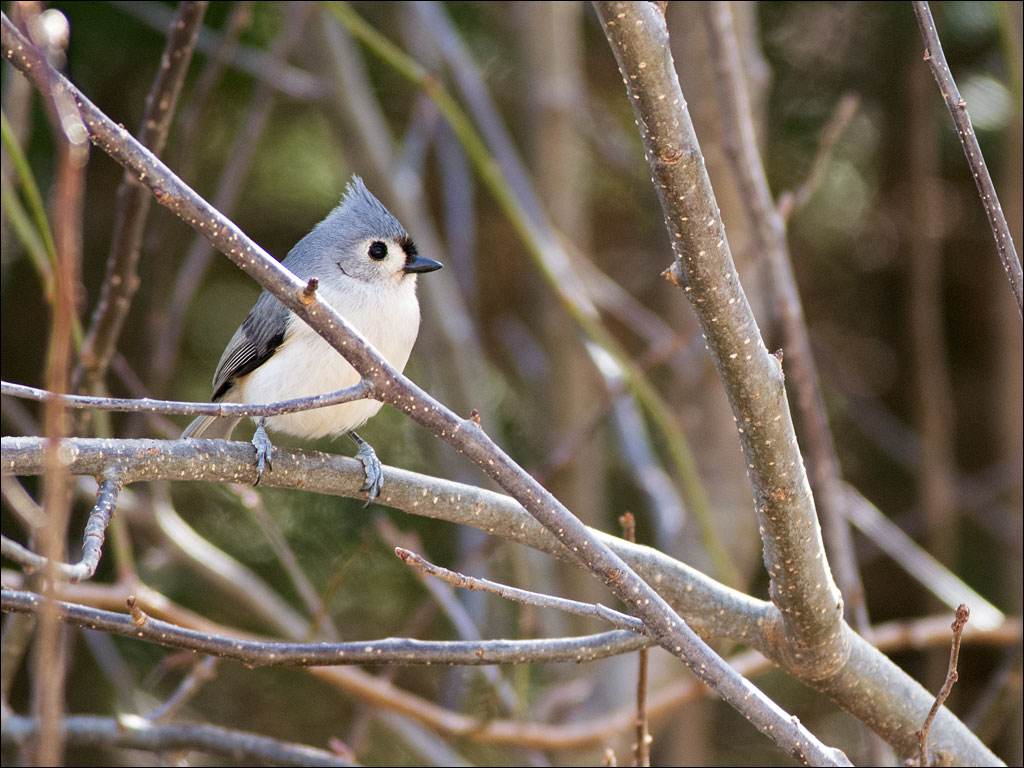 Sunday was unusually warm. Naomi and I spent an hour or so sitting in the sun on our deck watching the visitors to our bird feeders. One of these visitors was a Tufted Titmouse. Not an uncommon bird, but a shy one. After the Chickadees came and settled in, this one joined them. Not confident enough to feed on the feeder, it would return to the adjacent apple tree as soon as it plucked a seed from the netting. Click on the image for a larger view.
Sunday was unusually warm. Naomi and I spent an hour or so sitting in the sun on our deck watching the visitors to our bird feeders. One of these visitors was a Tufted Titmouse. Not an uncommon bird, but a shy one. After the Chickadees came and settled in, this one joined them. Not confident enough to feed on the feeder, it would return to the adjacent apple tree as soon as it plucked a seed from the netting. Click on the image for a larger view.
Birefringence
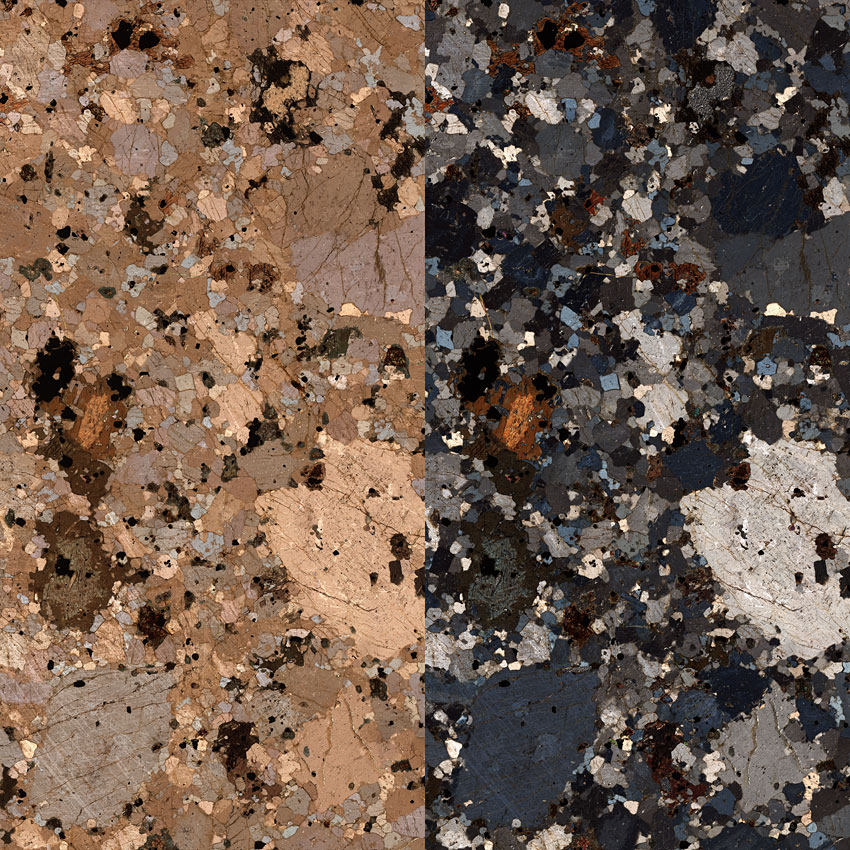 Some material, like the crystals in this granite sample, is known as birefringent, meaning it has two indexes of refraction so the speed light passes through the material depends on its angle of vibration. If you pass polarized light through this material, an odd thing happens—the material divides the light into two perpendicular vibrating rays. Because the rays have two orientations, they move through the material at two different speeds. If the exiting light passes through a second polarizer, the two rays are combined and the difference in their speed creates either constructive or destructive interference, resulting in changes in brightness and color. On the left is a simple brightfield image of a thin section of granite. The right is a polarized image of the same sample. Click on the image for a larger view.
Some material, like the crystals in this granite sample, is known as birefringent, meaning it has two indexes of refraction so the speed light passes through the material depends on its angle of vibration. If you pass polarized light through this material, an odd thing happens—the material divides the light into two perpendicular vibrating rays. Because the rays have two orientations, they move through the material at two different speeds. If the exiting light passes through a second polarizer, the two rays are combined and the difference in their speed creates either constructive or destructive interference, resulting in changes in brightness and color. On the left is a simple brightfield image of a thin section of granite. The right is a polarized image of the same sample. Click on the image for a larger view.
Magic of Light
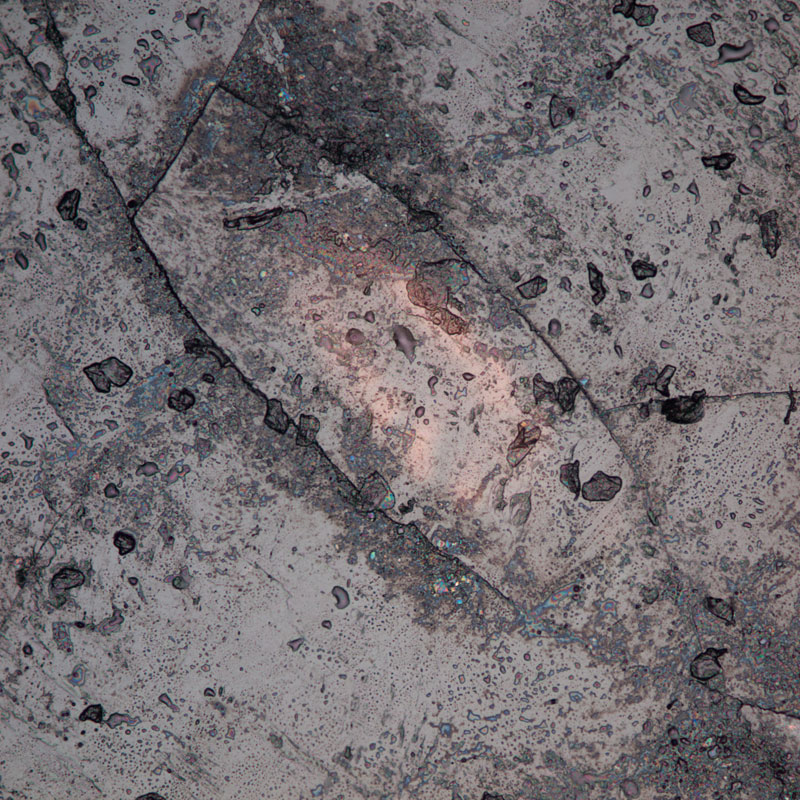 Our experience of light is rather simple —we shine light on something and we can see what it looks like. Shining it from one side or the other does not seem to change the object’s inherent appearance, but just the shading. One of the neat things about microscopes is because they work at such small scales and with very controlled illumination that they can reveal light’s complex nature.
Our experience of light is rather simple —we shine light on something and we can see what it looks like. Shining it from one side or the other does not seem to change the object’s inherent appearance, but just the shading. One of the neat things about microscopes is because they work at such small scales and with very controlled illumination that they can reveal light’s complex nature.
This image is of a tourmaline crystal. The microscope technique is known as a brightfield, meaning if the light striking the sample is not altered by it, you will see an even white field of light. But, because of scattering, absorption, and shifts in phase, the sample modifies the light, decreasing intensity, resulting in an image. This light is parallel to the optical axis. Now, if I took this light and shone it from the side, you would expect a similar result with a few more shadows. Continue reading
Out of Sight
 Our vision creates the world. When we look around, we imagine seeing objects in space in front of us. Yet, all we are doing is processing an image projected on the retina of our eyes. The world we see and its external reality is an illusion of our psychology and biology.
Our vision creates the world. When we look around, we imagine seeing objects in space in front of us. Yet, all we are doing is processing an image projected on the retina of our eyes. The world we see and its external reality is an illusion of our psychology and biology.
We take this vision so much for granted that what we perceive must be the same for everything. We all know about the compound eyes of an insect. Unlike the eyes of a mammal, it does not use a projected image to see. What becomes even more amazing is that many insects do not have just two eyes—spiders have eight. This particular animal has three additional eyes on the back of its head, the clear dome structures. What kind of reality does this creature perceive? Click on the image for a larger view.
Winter Light
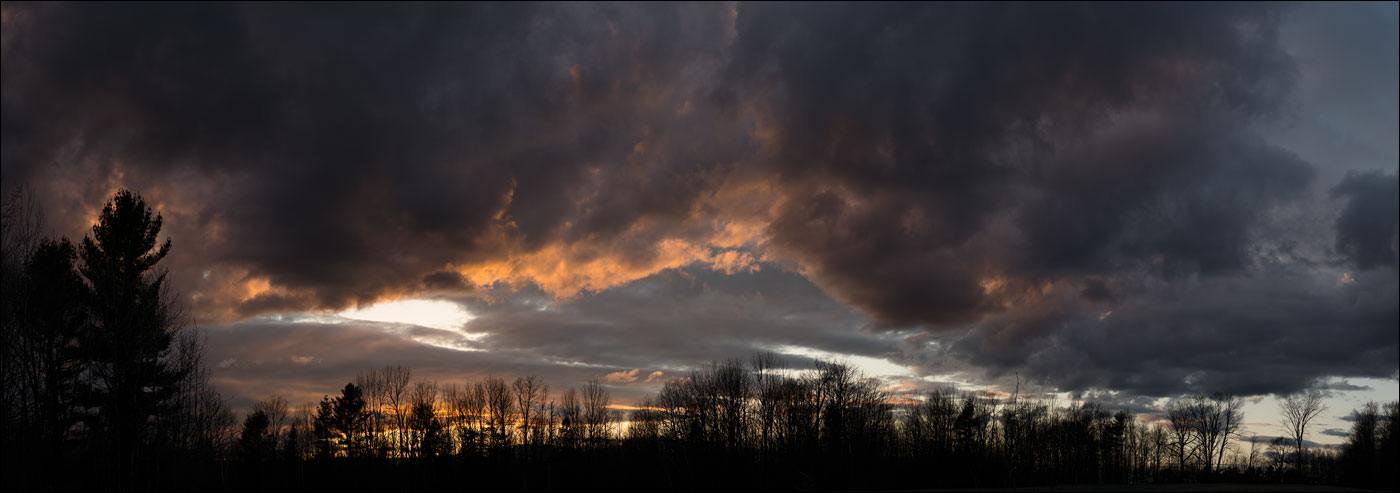 To walk to the edge of our forest in the evening and see the sun setting in the west signals the deepest period of winter is behind us. For most of the winter, leaving work and returning home in the dark is a matter of course. March gives the first signs of the lengthening days. It always feels like the sky is the first to fill with light before the land. Click on the image for a larger view.
To walk to the edge of our forest in the evening and see the sun setting in the west signals the deepest period of winter is behind us. For most of the winter, leaving work and returning home in the dark is a matter of course. March gives the first signs of the lengthening days. It always feels like the sky is the first to fill with light before the land. Click on the image for a larger view.


